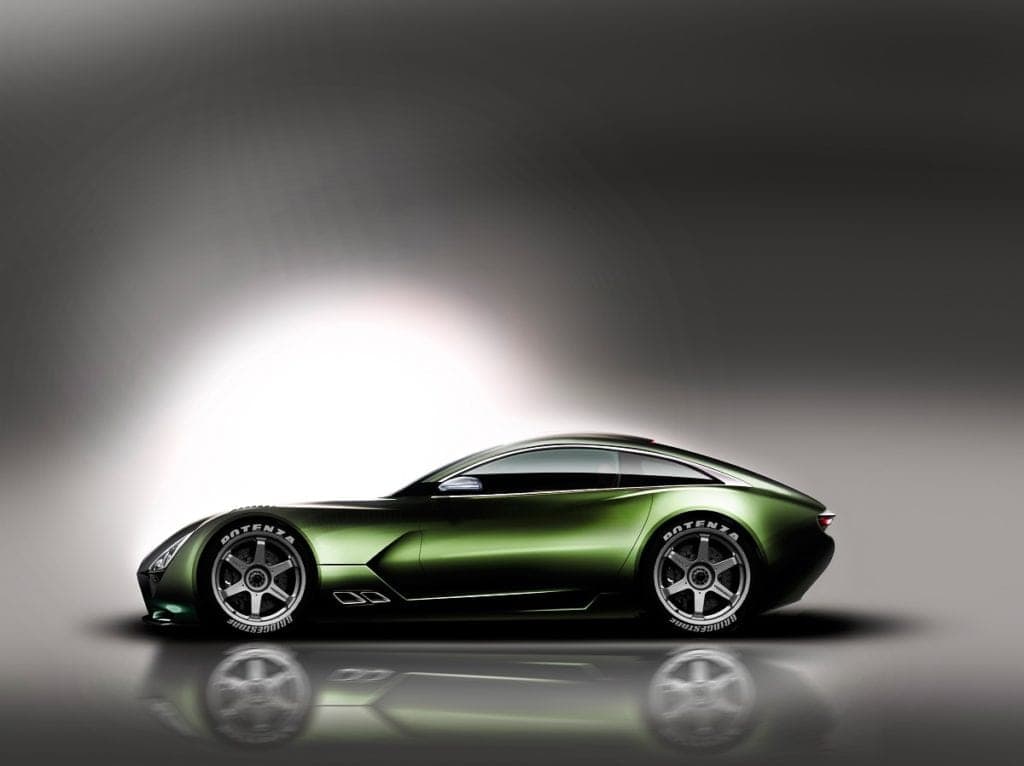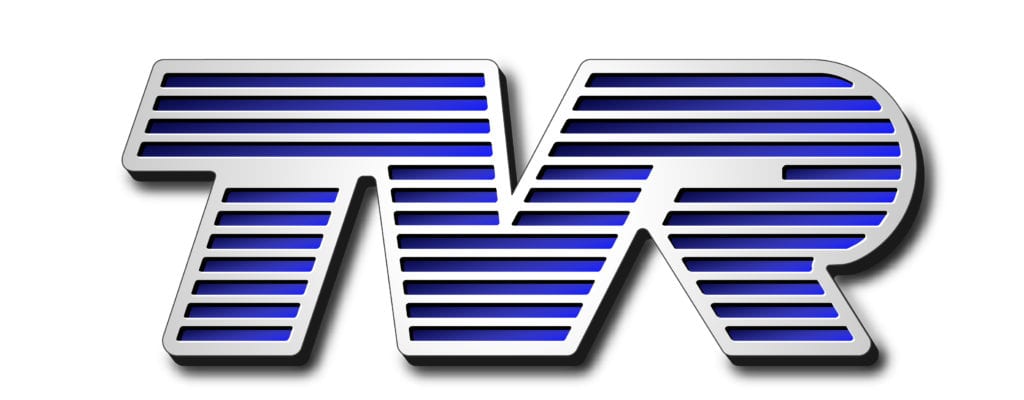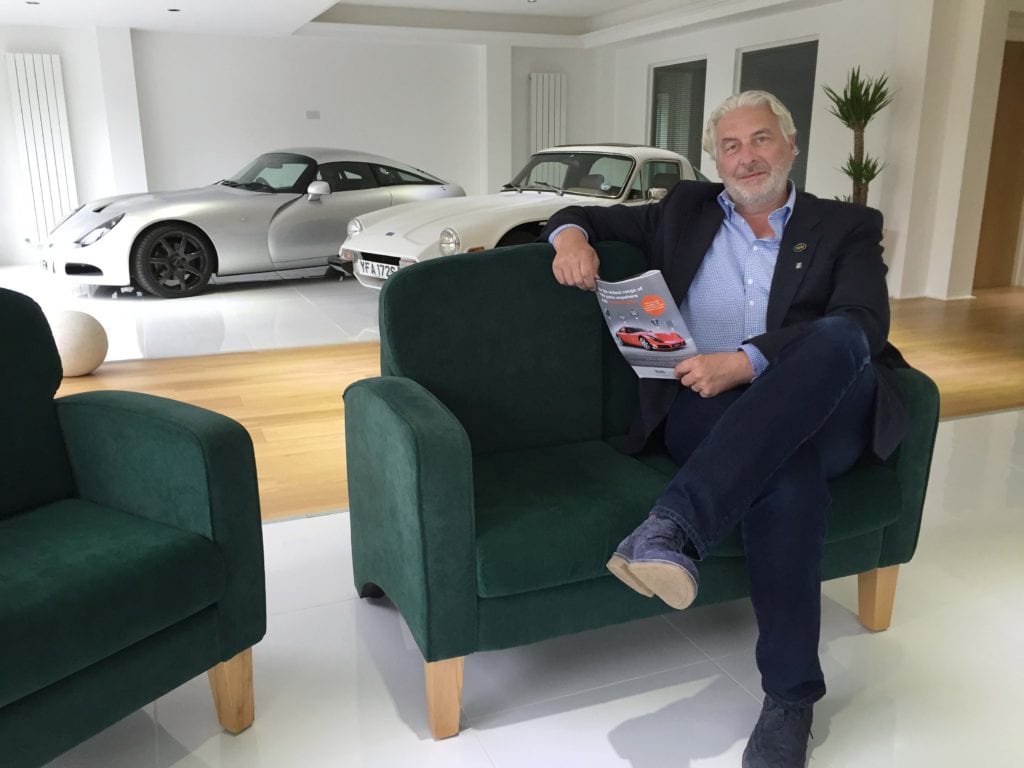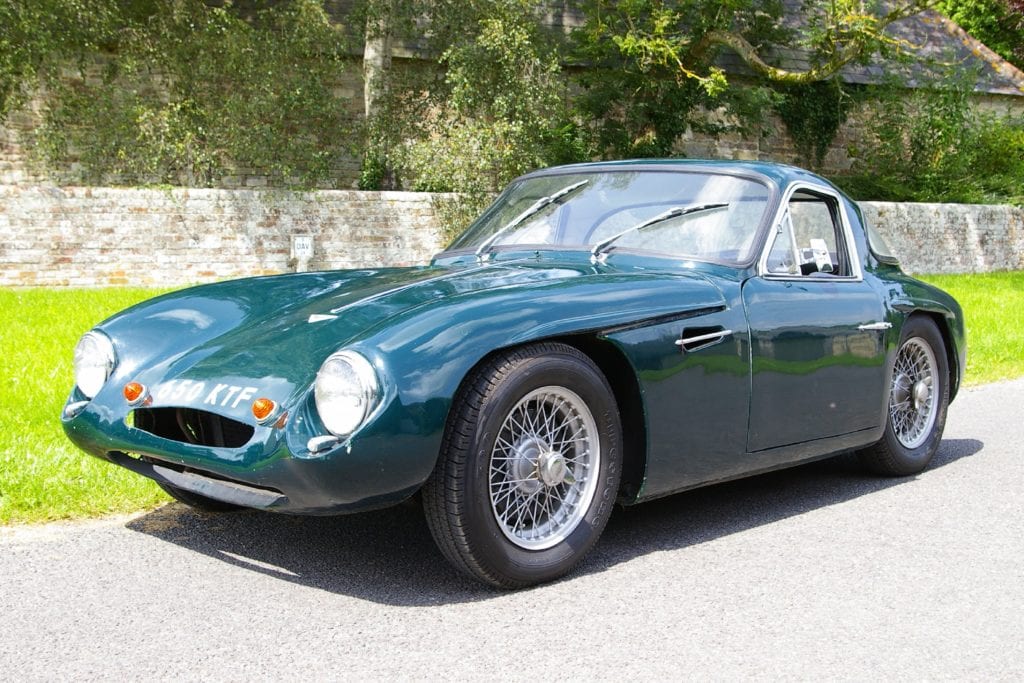Latest rebirth of TVR, a classic British niche marque, features a carbon-fibre (um, fiber) prototype, new designs and high-tech factory.

“This time it’s different” might be the most dangerous words in the English language. Car enthusiasts are grateful, though oftentimes disappointed, by efforts to revive marques that have fallen into disrepair.
So it is with TVR, 70 years old in 2017, and, sadly, defunct for the past decade. Now, though, two entrepreneurs — Les Edgar and the well-known Gordon Murray — have hopped behind the wheel and promise a revival.

For those unfamiliar with TVR (including, likely, most enthusiasts outside the U.K.) it was a British niche marque defined by crazy styling, raucous engines and blistering, raw performance. The company was started by Trevor Wilkinson — who gave the marque key letters, TreVoR, from his first name — in his native Blackpool, a seaside port, back in 1947. TVR hand-crafted small volumes of sports cars from mostly bespoke parts and appealed to individualists, almost all within Britain.
The new owners acquired rights to the TVR name in 2013 for a reported £15 million (about $19 million). They’ve announced a new factory in South Wales — thanks partly to a £30 million ($38 million) investment from the Welsh government — and hope to have the first car out next year.
Ralph Dodds of Britain’s TVR Car Club can’t wait. He owns two classics – a Tasmin and a 350i, both wedge designs from the early 1980s – and believes in the new ones. “There have been so many false alarms since 2006 we stopped believing what we heard,” he says. “It’s exciting. I hope they will produce a car in the spirit of TVR – fun to drive, not worrying too much about the masses.” He’d like to see them race, too.
The planned rebirth of TVR comes amid a broader revival for the British motor industry overall, albeit almost entirely under foreign ownership. The United Kingdom produced nearly 1.6 million cars, trucks and SUVs last year — a 10-year high — led by mass producers Toyota, Nissan, Honda, BMW (Mini) and Vauxhall (owned by General Motors).
Jaguar and Land Rover, both owned by India’s Tata Group, are thriving, and Aston Martin is enjoying resurgence under private equity owners. Among niche marques, where British ownership remains the rule, Austin-Healey, Triumph and MG are long gone, but Morgan, 80 this year, still makes cars with ash frames and antique style.
Caterham also survives with a classic 1957 Lotus Seven look, though now much modified; it’s terrifyingly light and quick. Lotus, curiously owned by Proton of Malaysia, is still there, while players such as Ultima, Noble and Ginetta make cars for the track. McLaren thrives at the top end. Among other defunct makes that have attempted comebacks, Jensen and Lea-Francis both foundered.
One reason for optimism about TVR’s latest rebirth is the expertise of the two men driving the project. Edgar is an accomplished entrepreneur who made money in computer gaming. Murray is a car designer, engineer and enthusiast of the old school; he was behind the McLaren F1 road car, a breathtakingly handsome and fast machine.
He also, crucially, lays claim to a new method of low-cost car production system – iStream – that is supposed to transform the business model for small-scale makers. iStream uses carbon-fibre technology to slash both capital-investment and production costs, because the process involves bonding to the frame a relatively small number of panels that feature a “honeycomb” design.
This gives them strength, torsional rigidity, and good handling — and dispenses with the need for expensive tooling. The benefits can be reaped in superior perfomance or fuel-economy, or a combination of both.

The new TVRs will be available with a premium carbon-fibre body or, alternatively, a more traditional steel-tube and composite construction. The latter might also use some carbon fibre panels – this does not seem to have been decided (though traditional composites would not possess all of the same benefits as the carbon-fibre versions). The first cars might sell for around £55,000 ($70,000).
Edgar says: “We now hold more than 350 deposits from enthusiastic individuals who are keen to be proud owners and drivers of the new TVR.” The company aims to make 800 to 2,000 cars a year. Those volumes won’t keep executives in Toyota City awake at night, but they’ll yield the craft-brew exclusivity that some enthusiasts crave.
Another promising sign: TVR will no longer design and make its own power-plants. Instead of the company’s legendary, but temperamental, bespoke straight sixes, the new TVR s will feature 500 (or more)-horsepower Ford V8s developed by Cosworth to maximise power and drama on the road. True to TVR tradition, the new cars almost certainly won’t offer the civilising stability controls available in competitors such as BMW.
The new TVRs look promising in the sneak sketches revealed so far, which matters a lot in this market. They certainly can draw on a great tradition and valuable DNA. The first ones were a hobby for Wilkinson, whose day job was “bashing metal” for the local funfairs – appropriately enough for a wannabe sports car maker.

With basic “soap box” styling they took their suspension and power-plants from small British economy cars of the era, such as Austins and Fords, combining modest power with ultra-low weight. Later TVRs — notably the still-gorgeous Grantura of 1959 — acquired prettier bodywork. The Seventies brought the “wedge,” styling reminiscent of the contemporary Lotus Elite and Triumph TR7.
In the 1990s and early 2000s TVR became the traditional, hand-built British sports car of choice for those who wished to let the world know – loudly – that they had made it. The boom in London’s banks created a production boomlet in Blackpool. TVRs used almost entirely bespoke components, from the dashboard dials to the leather seats to the virile engines of up to 440 horsepower.
But by that time, with the Griffith and the Cerbera models in particular, the company, under the ownership of Peter Wheeler, began to overreach.
The quirks that made the company and its cars so charming also proved its downfall. It’s said that even by the early 2000s computers were a rare sight in the Blackpool “shed.” Another tale, perhaps apocryphal: the front-end styling of the Cerbera, which has two indentations on the front air dam that appear made by a dog’s tooth were in fact just that — the result of Stevens’ dog, Ned, taking a bite out of the front of the clay styling mule.
Such devotion to craftsmanship made things more difficult for the tiny outfit, which has only manufactured about 21,000 vehicles in its entire history. By 2006, when it went bust, TVR was unable to meet modern safety and emissions standards, and couldn’t hope to keep up with the R&D budgets of the likes of Porsche. Reliability and quality suffered.
The remains of TVR were bought by Nicolai Smolenski, scion of a wealthy Russian family, but nothing substantial emerged from the wreckage. Perhaps this time TVR’s carbon-fibred future will be brighter. Fingers crossed.

